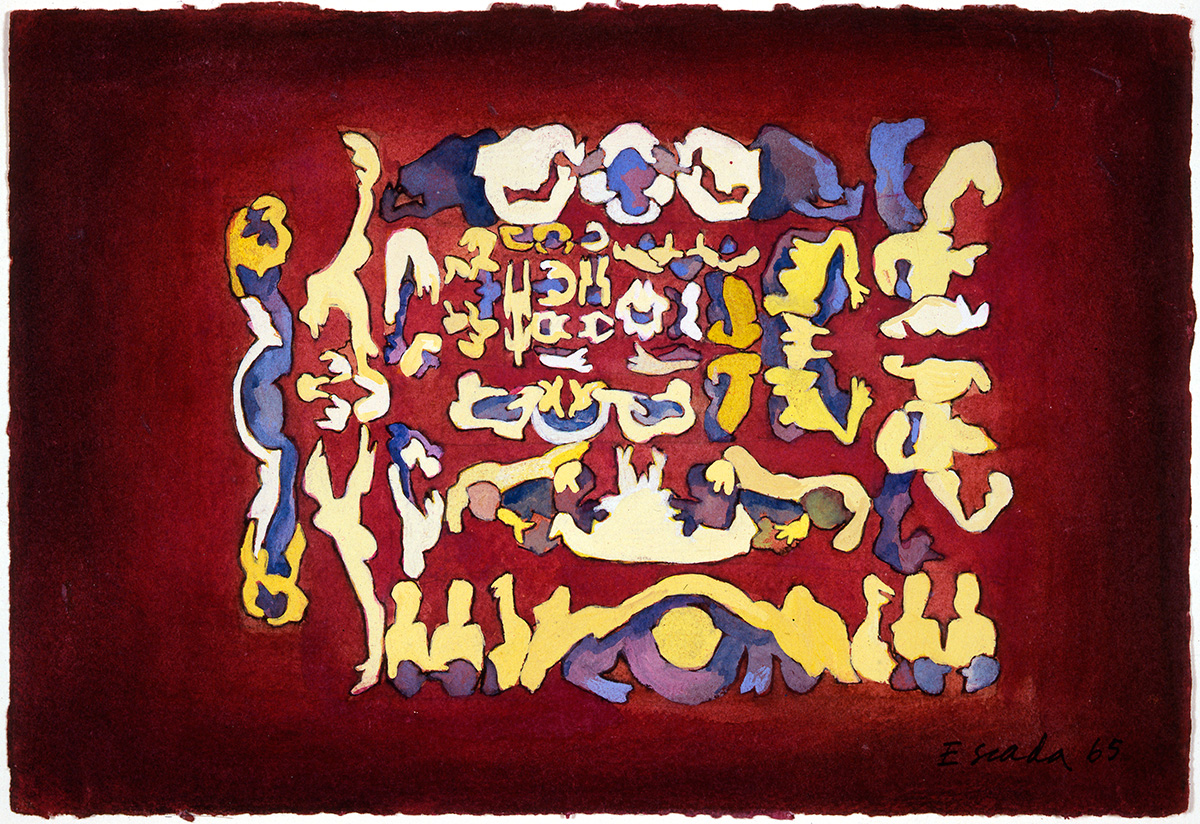I do not evolve, I travel.

On 9 July, the Gulbenkian Foundation unveils the first retrospective exhibition dedicated to the painter José Escada (Lisbon, 1934-1980) providing an opportunity to see and know an artist who developed an intense and abundant range of works with a deep sense of experimentation. He utilised different means and techniques – sketching, illustration, collages, profiled reliefs, among other artistic genres – and collaborated with artists, architects and writers. Around 170 works make up the exhibition – some never before seen and the large majority coming from private collections –, divided into five thematic sections that follow a chronological structure running from 1955 to 1980 and spanning his different creative phases.
The career of José Escada began in the 1950s in a highly promising and active fashion defined by his collaborations with architects and especially within the MRAR (Religious Art Renovation Movement) context. This period also featured his involvement in books, magazines and newspapers, whether as an illustrator or the author of critical texts about modern art and artistic education in Portugal in outputs that remained forgotten but are now published in the catalogue that accompanies this exhibition.
A Calouste Gulbenkian grant holder in Paris between 1960 and 1961, Escada there intensified his studies around abstract art, collaborating with the KWY group and the artists Lourdes Castro, René Bértholo, Costa Pinheiro, João Vieira, Gonçalo Duarte, Christo and Jan Voss. Founded around the KWY (1958-1963) magazine, the group remained active through to 1968.
The Parisian period, which extended through to 1971, one of his longest and most active periods, was the stage for the creation of a singular and complex universe of profiled, anthropomorphic figures. These years were also dedicated to research into space, the artistic properties of painted surfaces and three-dimensionality, with the emergence in 1965 of the first of his three-dimensional reliefs-objects.
The 1970s saw the development of a new representation, the “chains” or “ties”, which accompany a production around the representation of bodies – stricken, oppressed and, finally, liberated –, a political body that forms the body of a history of a country that in 1974 freed itself of a dictatorial regime. Right at the end of the decade, on the eve of his own premature death, aged 46, the work of José Escada centred on more figurative and autobiographical works depicting a world that tended to be that closest to him: the neighbourhood of Alto de Santo Amaro in Lisbon, his mother’s house, his bedroom-atelier, his window.
Divided into five sections, this exhibition spans every phase of his work. In Joie de Vivre, the exhibition revisits the origins of his work, less well known, in which there simultaneously emerges the sinuously profiled lines and a rich and bright palette; Illuminations features a set of works produced between 1963 and 1965 in which the light is central not only as a transformative feature of the space for painting but also as a mystical component; in Metamorphoses there predominates the three-dimensional profiles and the collages that reveal an anthropomorphic figuration; the following section, Our own chains conveys painted works dominated by the theme of chains and ties coinciding with his productions focusing on representations of the male body. Finally, in From my window, the artist closes himself off in an intimate and autobiographical universe.
Know more about the event: I do not evolve, I travel.
